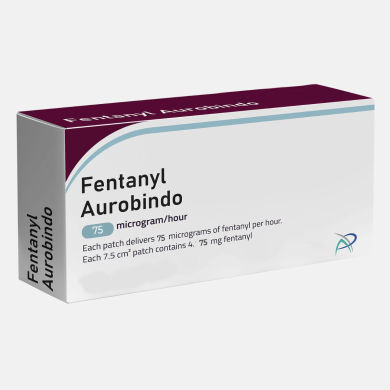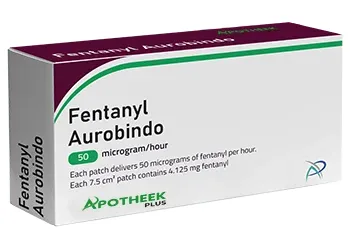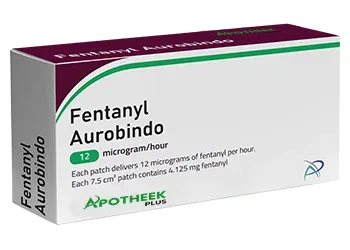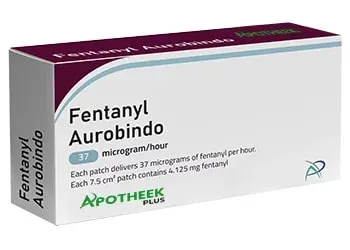What are you looking for?
Search
Welcome to Apotheek Plus France!

Fentanyl Patch 100: How It Works, Benefits, and Safety Tips for Pain Management

Chronic pain can significantly reduce life quality. Making adequate pain control a major goal for any patient. An advanced method of pain management that is long-acting is the Fentanyl Pleister, commonly known as the Fentanyl patch. This new form of treatment allows the patient to have constant treatment for persons suffering from chronic or severe pain.
Many patients report the fentanyl patch effect to be smoother and more sustained compared to oral medications.
This article will explain how the Fentanyl Patch operates. The advantages include corporations that receive the prescription and significant safety measures to follow for administration.
How Fentanyl Patch Works
Fentanyl plaster is a fentanyl wave. Which is an artificial opiate, which is administered through the skin and into the bloodstream in a metered quantity. This delivery system offers several advantages, including
-
Continuous Pain Relief: Delivers controlled and steady medication for approximately 3 days to regulate pain
-
Avoidance of Digestive System: Unlike pills, the patch does not have to pass through the digestive process. Thus, avoiding potential side effects related to stomach conditions.
-
Effective for Severe Pain: Mainly used for long-term severe pain, such as cancer pain or after-surgery pain relief.
The fentanyl patch effect typically begins within a few hours of application and provides a steady release of the medication, making it especially valuable for those needing long-term relief. For advanced cases, higher-dose options like the Fentanyl patch 100 may be prescribed under close medical supervision.
Benefits of Fentanyl Patch
-
Long-Lasting Relief: The patch provides pain relief. Which lasts up to 72 hours, making the need to apply it frequently minimal.
-
Convenience: It is invisible, simple to use, and does not require remembering to take several doses a day.
-
Improved Quality of Life: Patients suffering from chronic pain can rely on the patch for relief. And its steadiness in performing their daily tasks with minor discomfort.
-
Effective Alternative to Oral Opioids: Particularly effective for patients who experience poor tolerability of oral medications because of nausea or gastrointestinal pathologies.
Who Is a Prescribed Fentanyl Pleister?
The Fentanyl Patch is not suitable for everyone, so doctors usually prescribe it selectively.
-
Chronic Pain Patients: More suited for patients who have severe chronic pain that cannot be managed with mild pain relief medication.
-
Cancer Patients: Sometimes administered as an end-stage treatment plan for patients diagnosed with cancer-related pain.
-
Post-Surgical Recovery: It was effective for postoperative pain as an acute pain management tool after major surgery.
-
Opioid-Tolerant Patients: It helps patients who have taken opioids earlier and have become tolerant to normal-strength opioids.
Dosage may vary based on the severity of pain, with stronger variants such as the Fentanyl patch 100 reserved for opioid-tolerant patients under specialist care.
Precautions to Take When Using Fentanyl Pleister
To use the Fentanyl Pleister safely and effectively, it’s essential to follow these precautions:
-
Apply as Directed: Be sure to put the patch on clean, dry, and non-irritated areas of the skin.
-
Do Not Cut the Patch: Cutting the patch can result in an uncontrolled release of the medication, leading to an overdose.
-
Avoid Heat Exposure: Heat can increase the absorption rate of fentanyl, potentially causing overdose. Avoid hot baths, saunas, and heating pads.
-
Monitor for Side Effects: Common side effects include drowsiness, nausea, and constipation. Seek medical attention if you experience difficulty breathing or confusion.
-
Keep Away from Children: Ensure the patch is safe to prevent accidental exposure.
-
Avoid Alcohol and sedatives: Combining the patch with alcohol or sedative medications can amplify side effects and increase the risk of respiratory depression
-
Do Not Use for Acute Pain: The patch is for chronic pain management and unsuitable for short-term or mild pain relief.
Potential Risks and Side Effects
Although effective, the Fentanyl Pleister comes with risks, especially if not used correctly. Common and serious side effects include:
-
Common Side Effects: Drowsiness, nausea, dizziness, and constipation.
-
Serious Risks: Respiratory depression, dependency, and potential overdose if misused.
-
Allergic Reactions: Symptoms such as rash, itching, or swelling should be reported immediately.
The fentanyl patch effect may differ between individuals based on tolerance levels, skin absorption rate, and concurrent medications.
How to Use Fentanyl Patch 100 Safely
-
Consult Your Doctor: Only use the patch under strict medical supervision.
Follow Instructions: Adhere to the prescribed dosage and application guidelines. -
Monitor Effectiveness: Regularly check in with your doctor to assess pain relief and side effects.
-
Dispose of Used Patches Properly: Fold the patch in half (sticky sides together) and discard it as directed by your healthcare provider.
-
Seek Help for Dependency: Consult your healthcare provider immediately. If you notice signs of dependence,
Conclusion
The Fentanyl Patch is a powerful and convenient option for managing severe chronic pain, providing consistent relief for up to three days. Its effectiveness, combined with its ease of use, makes it a preferred choice for individuals who need advanced pain management solutions. However, the potency of this medication requires strict adherence to safety guidelines and regular consultation with a healthcare provider. By understanding how it works and following precautions, patients can safely benefit from the Fentanyl Pleister and improve their quality of life.
If you’re considering the Fentanyl Patch for pain management, talk to your doctor to see if it’s the right option for you. Higher dosages like the Fentanyl patch 100 are available but should only be used under close medical supervision due to their potency. For those looking to buy painkillers online, it is crucial to do so through reputable and legally compliant pharmacies to ensure both safety and authenticity.








